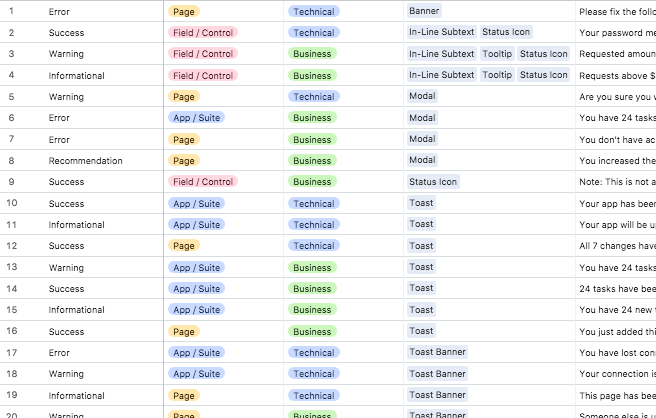BACKGROUND
While working at NYC-based Infor—the world’s third largest enterprise software company—I helped create a product roadmap to unify the user experience our suite of back-office retail management applications.
Traditionally an ERP company, Infor has spent the past six years marrying consumer-grade experiences with enterprise-level capabilities.
As part of this mandate, my team was tasked with bringing a human-centric, mobile-first approach to our suite of retail management applications.
I was asked by the Director of Product for Infor’s Hook & Loop division (the R&D lab inside of Infor), to lead an initiative to create a roadmap for establishing an consistent experience across our retail management suite.
Problems + challenges
6 disparate multi-tenant SaaS applications
Accommodate highly configurable workflows
Combination of legacy and in-development systems
Multiple design systems + FE platforms
GOALS
Covering all our bases
Leading this cross-product roadmapping initiative, I worked with a diverse team to understand their challenges, needs and desired outcomes. Stakeholders included a business analyst, product designers across our retail and supply chain software teams and an inventory management product manager.
I also regularly met with my Director of Product for her feedback and to keep her abreast of my progress.
I identified 4 key considerations and goals to balance the differing priorities of our customer, UX and development stakeholders.
INITIATIVE
GOALS
- Unify product experience, while minimizing impact to ongoing feature development
- Improve workflows to accommodate different processes across retailers
- Deliver significant improvements as quickly as possible to meet customer expectations
- Create a framework-agnostic universal component library to increase front-end development velocity
STRATEGY
Maximizing improvements
without derailing the train
Given the sheer number of products in our retail suite, some were closer to our "ideal" state than others. Some had implemented our emerging component library, others were using a bespoke design system, some had robust data manipulation functionality and table controls, others were still working towards that.
This was the biggest challenge of unifying the products: do we stop and reconcile differences? Or do we continue our asynchronous progress?
Pausing to retrofit before proceeding with net-new features would mean that we may ultimately end up with a consistent suite from a UX perspective, but at the expense of delaying functional needs to our customers.
Snapshot of audit results using Airtable, a modern, collaborative spreadsheet and kanban tool
So the questions instead became: Is there a way to do both? Can we be smarter about how we're prioritizing our work and identify opportunities within existing roadmaps to meet our goals?
To see if this was feasible, I tasked my team with a gap analysis to compare each product to our "desired experience" and note discrepancies.
GAP THEMES
1. Navigation and workflow
2. Interaction and behavioral
3. Components and design system
4. Features and capabilities
Balancing the differing priorities of my stakeholders, I determined we could deliver greatest impact to our customers and minimize impact to ongoing feature development by prioritizing the first two gap themes: navigation and behavior.
The tradeoff was that for a time, components and elements would be inconsistent across products and from an interaction design perspective and we would have define the same behavior for multiple functionally identical controls.
However, the benefits of keeping our release trains on schedule far outweighed those drawbacks.
With this approach, I prioritized the four themes at emerged during our gap analysis.
PRIORITIZED THEMES
Based on balancing the goals of my various product and customer stakeholders, I recommended the following order of priorities for our unification work.
1. NAVIGATION
- Global Navigation
- Alerts + Notifications
2. BEHAVIORS
- System Feedback
- Data Manipulation
- Forms
3. COMPONENT LIBRARY
- Table Controls
- Cross-product standardization
4. NET-NEW FEATURES
- Global Dashboard
ROADMAPPING + OUTCOME
Making it work
After prioritizing the themes that emerged in our gap analysis, we needed to see how these would map to individual product roadmaps. My Director of Product worked with individual development leads to determine their capacity and estimate level of effort for each functional epic.
The result was a suite-wide roadmap that negotiated our unification priorities, functional epics and accounted for the capacity constraints of each product team.
Snapshot of cross-product roadmap aligning prioritized initiatives to individual product team capacity and workstreams.
Snapshot of cross-product roadmap aligning prioritized initiatives to individual product team capacity and workstreams.
With our unification goals clearly identified, strategic priorities determined and a comprehensive cross-product, epic-level roadmap, I created a presentation deck to facilitate approval from all needed stakeholders.
Our plan received approval from our major customers, engineering leads and Infor's VP of Product Experience. In less than a month, we had established a year-long roadmap across an entire suite of retail management tools.






